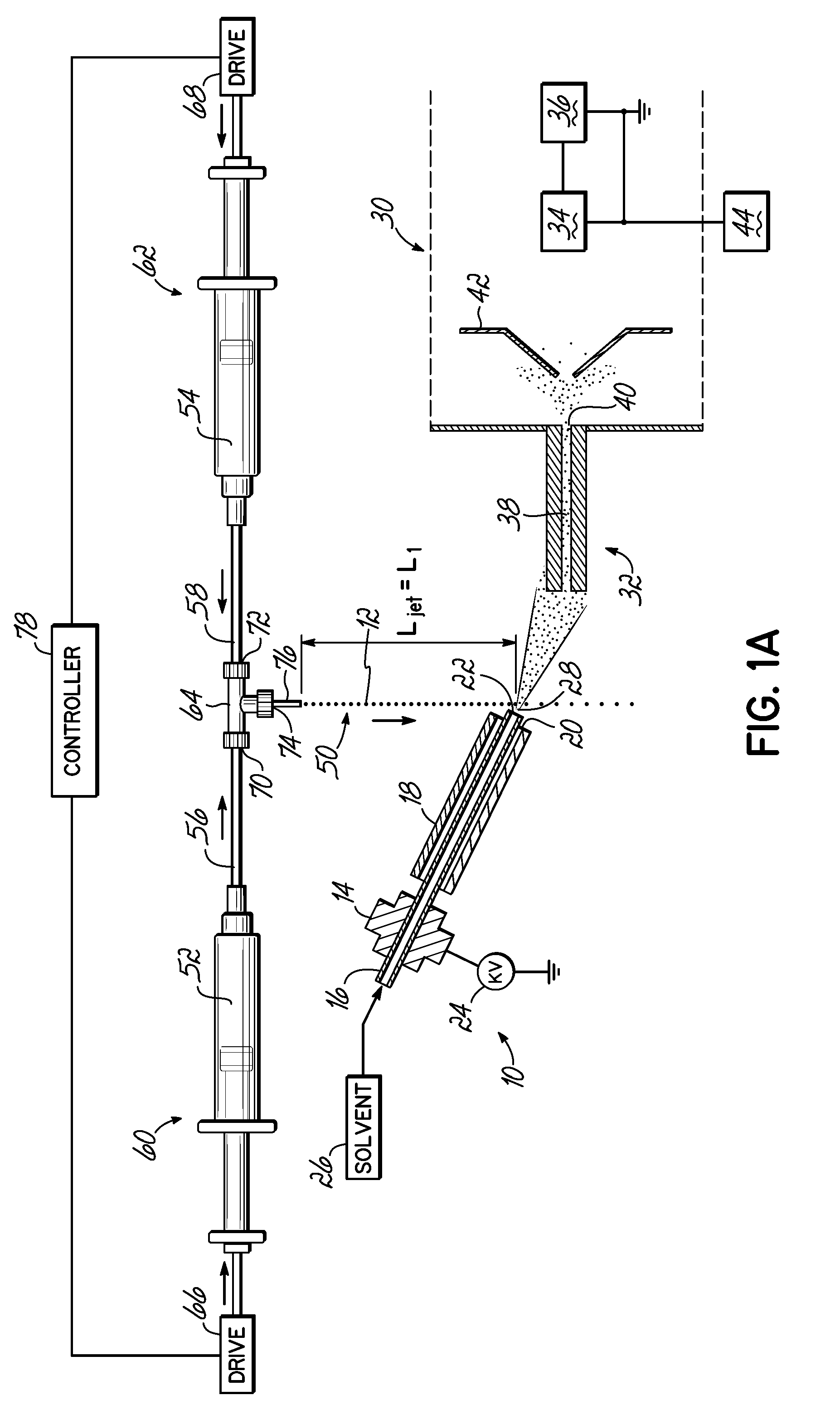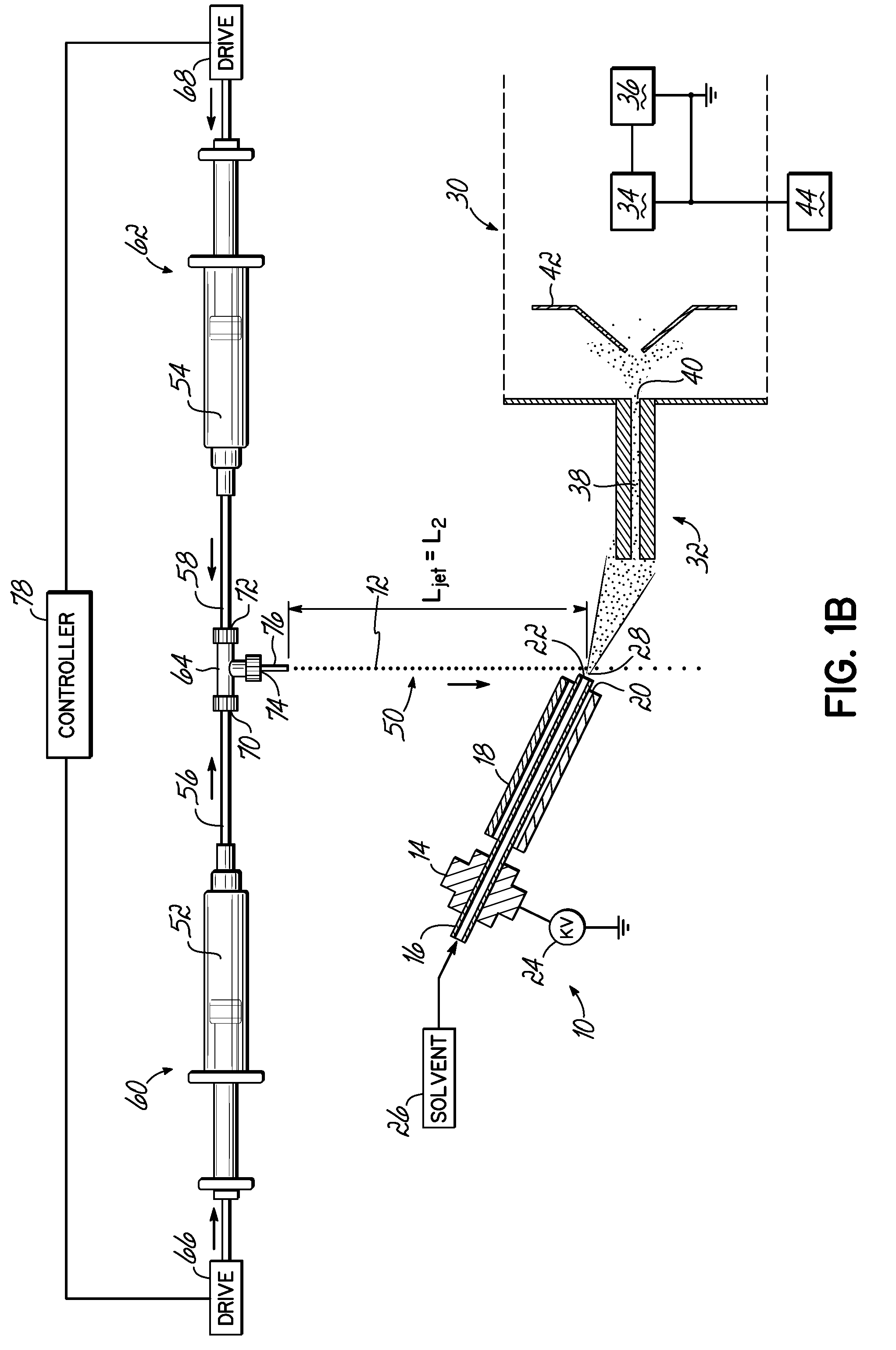Microsecond time-resolved mass spectrometry
a time-resolved mass spectrometry and microsecond technology, applied in material analysis, instruments, electric discharge tubes, etc., can solve the problems of chromophoric substrates or radioactive labeling, and achieve the effect of reducing the number of radioactive components
- Summary
- Abstract
- Description
- Claims
- Application Information
AI Technical Summary
Benefits of technology
Problems solved by technology
Method used
Image
Examples
example 1
[0042]The rate of acid-induced unfolding of cytochrome c was investigated using a device similar to the exemplary embodiment of FIG. 1A. A rate of conformational change for cytochrome c may be generally expressed as:
FU
where F designates the folded protein conformation and U designates the unfolded protein conformation.
[0043]In that regard, a sample of cytochrome c in H2O was loaded into the first syringe 52 and a 4% acetic acid solution was loaded into the second syringe 54. Fast mixing occurred within the Tee-mixer 64. The liquid jet 50 was sampled for DESI-MS analysis at Ljet, distances of about 0.5 cm, 1.0 cm, 1.5 cm, 2.0 cm, 2.5 cm, and 3.0 cm, which are calculated to correspond to reaction times of 10.5 ms, 12.0 ms, 13.5 ms, 15.0 ms, 16.5 ms, and 18.0 ms, respectively.
[0044]FIG. 3A illustrates an exemplary spectrum acquired at Ljet=0.5 cm (10.5 ms) and demonstrates dominating peaks having m / z values ranging between +7 and +10, corresponding to the native protein ions, i.e., fol...
example 2
[0047]The rate of L-ascorbic acid (“L-AA”) induced reduction of 2,6-dichlorophenolindophenol (“DCIP”) was investigated using a device that is similar to the exemplary embodiment of FIG. 2. The reaction under investigation may be expressed as follows:
[0048]A solution of 40 mM LAA in 20 mM HCl and a solution of 0.2 mM DCIP in H2O were pumped via the HPLC pumps 84, 86 at a flow rate of 1.0 mL / min into the Tee-mixer 64 to produce a continuous jet 50 having a pH of 2.0. Desorption and ioniziation occurred with the DESI sprayer 10 having a spray solvent 26 of 20 mM aqueous NH4OAc buffer having a pH of 7.0 under nitrogen gas. An LCQ DECA mass spectrometer 30 (Thermo Finnigan, San Jose, Calif., USA) was used for mass analysis.
[0049]A vertical micrometer adjusted the height of Tee-mixer 64 relative to the DESI sprayer 10 and the mass spectrometer 30 for DESI-MS analysis. Ljet distances of 1.0 cm, 1.5 cm, 2.0 cm, 2.5 cm, 3.0 cm, 3.5 cm, and 4.0 cm were calculated to correspond to reaction tim...
PUM
 Login to View More
Login to View More Abstract
Description
Claims
Application Information
 Login to View More
Login to View More - R&D
- Intellectual Property
- Life Sciences
- Materials
- Tech Scout
- Unparalleled Data Quality
- Higher Quality Content
- 60% Fewer Hallucinations
Browse by: Latest US Patents, China's latest patents, Technical Efficacy Thesaurus, Application Domain, Technology Topic, Popular Technical Reports.
© 2025 PatSnap. All rights reserved.Legal|Privacy policy|Modern Slavery Act Transparency Statement|Sitemap|About US| Contact US: help@patsnap.com



